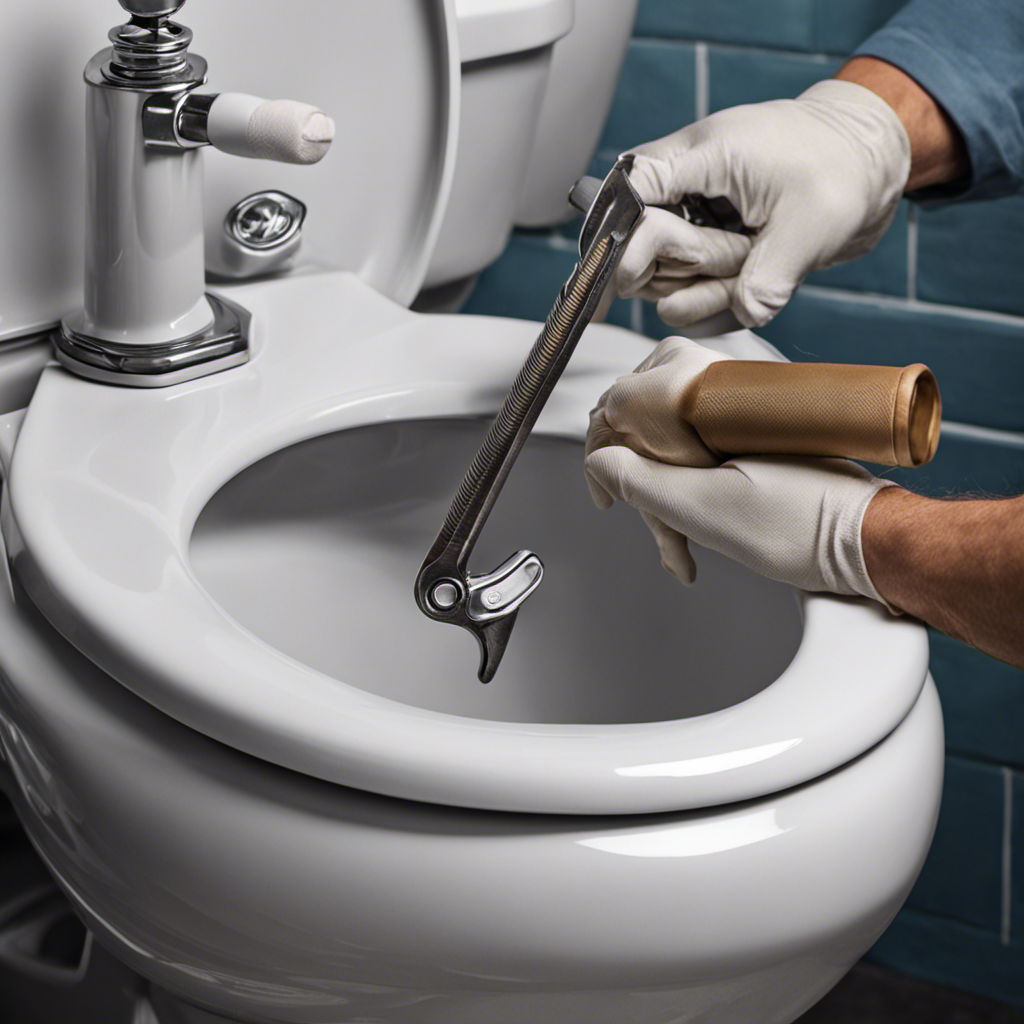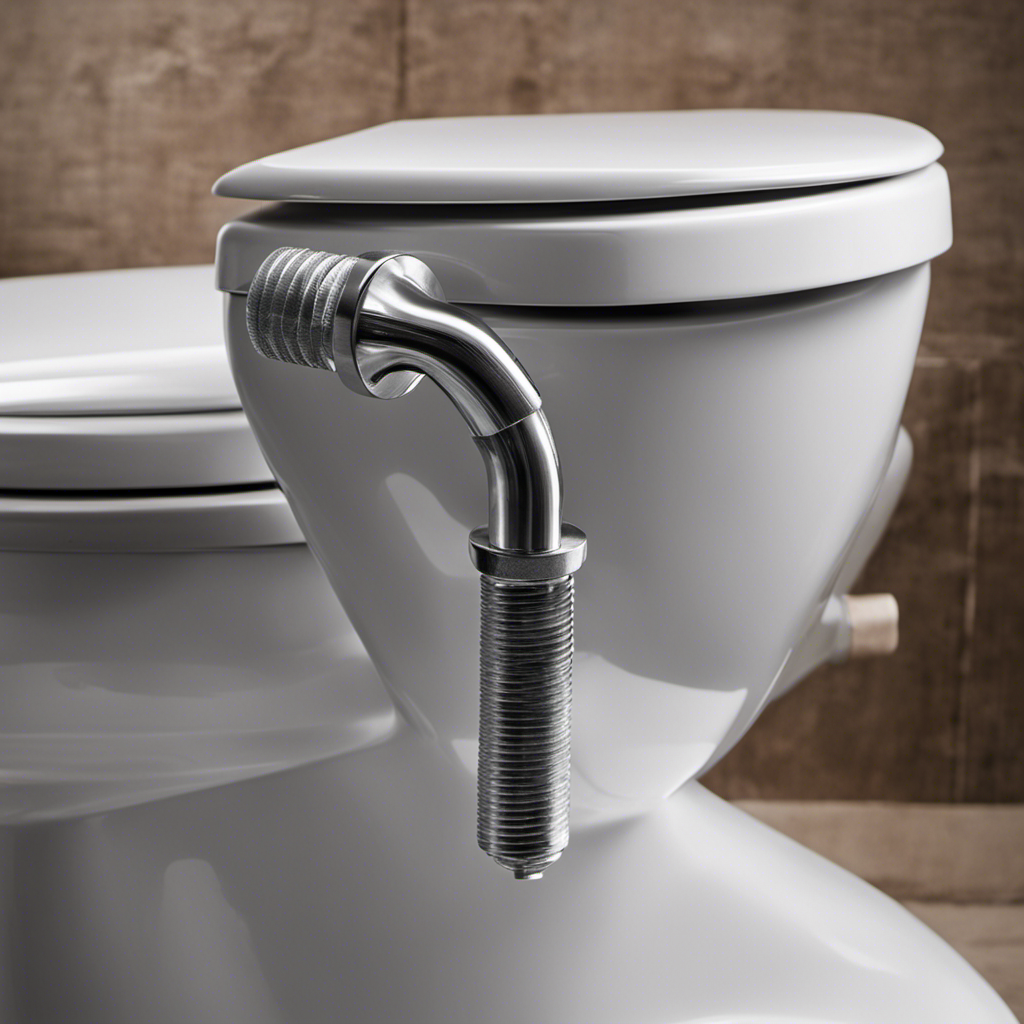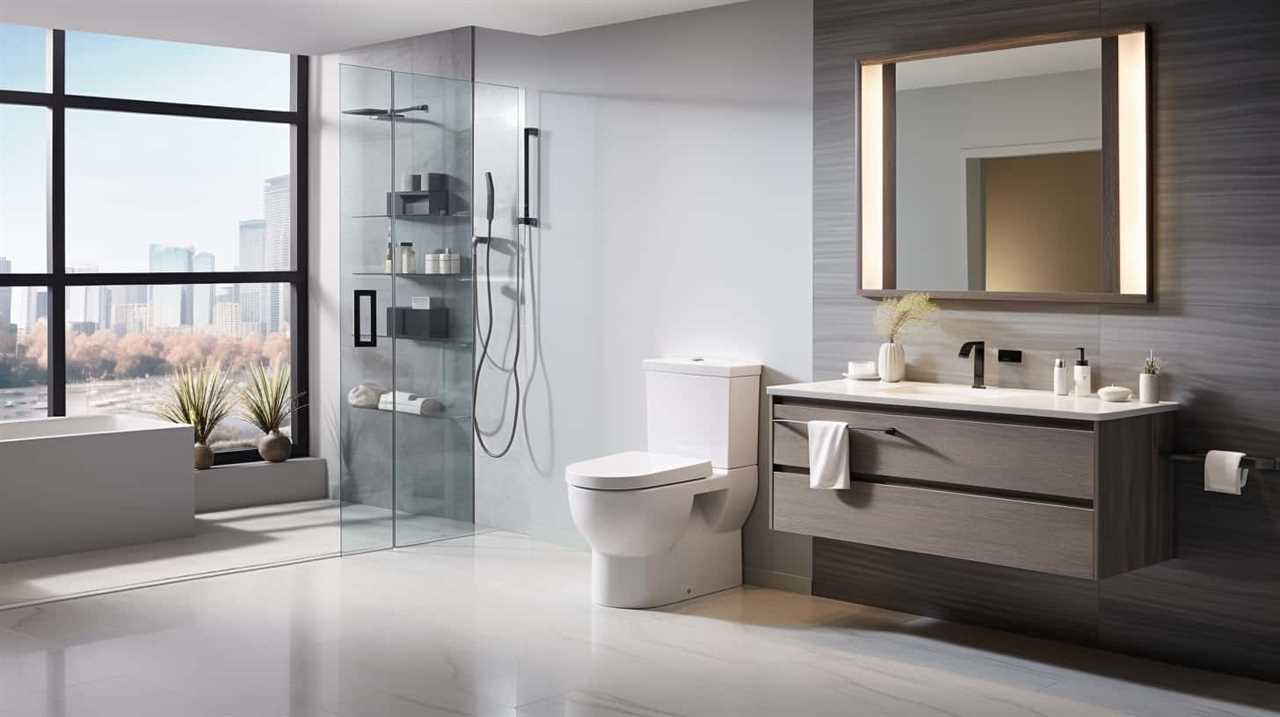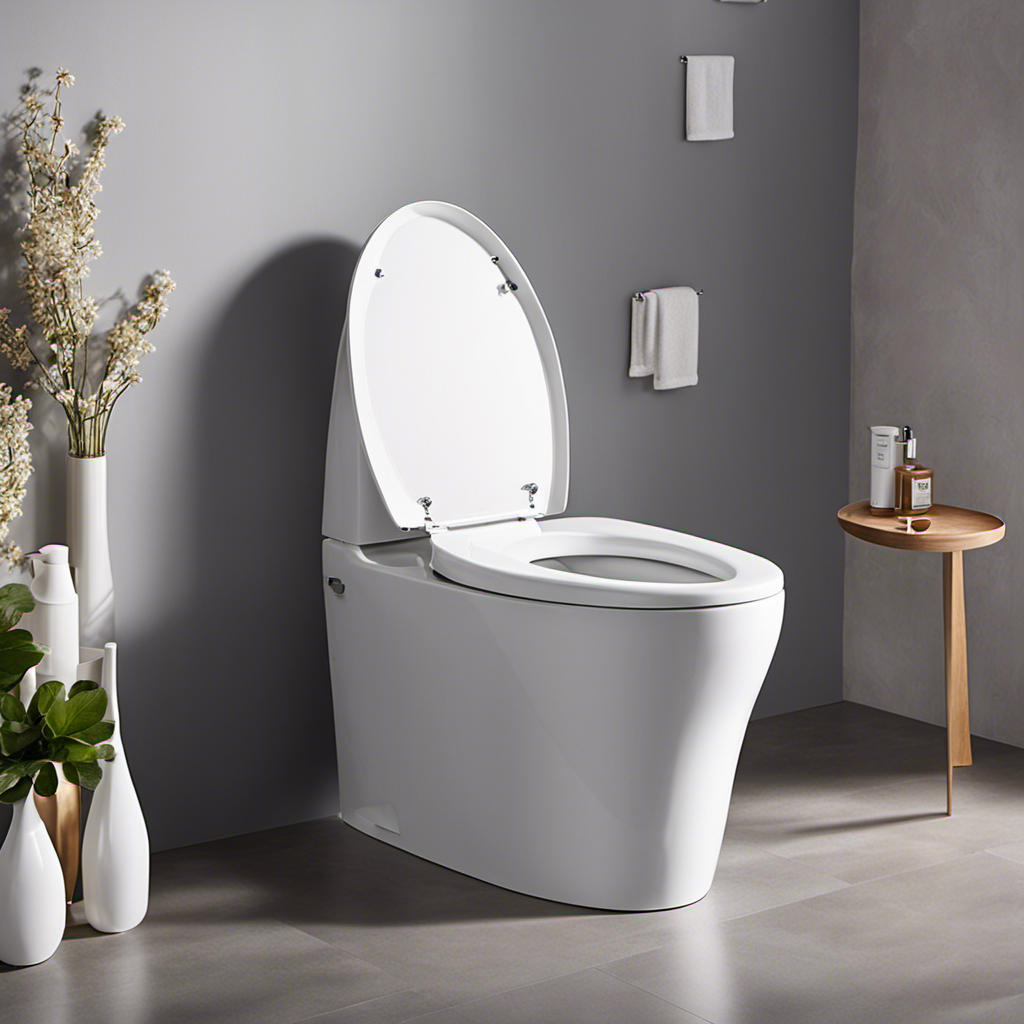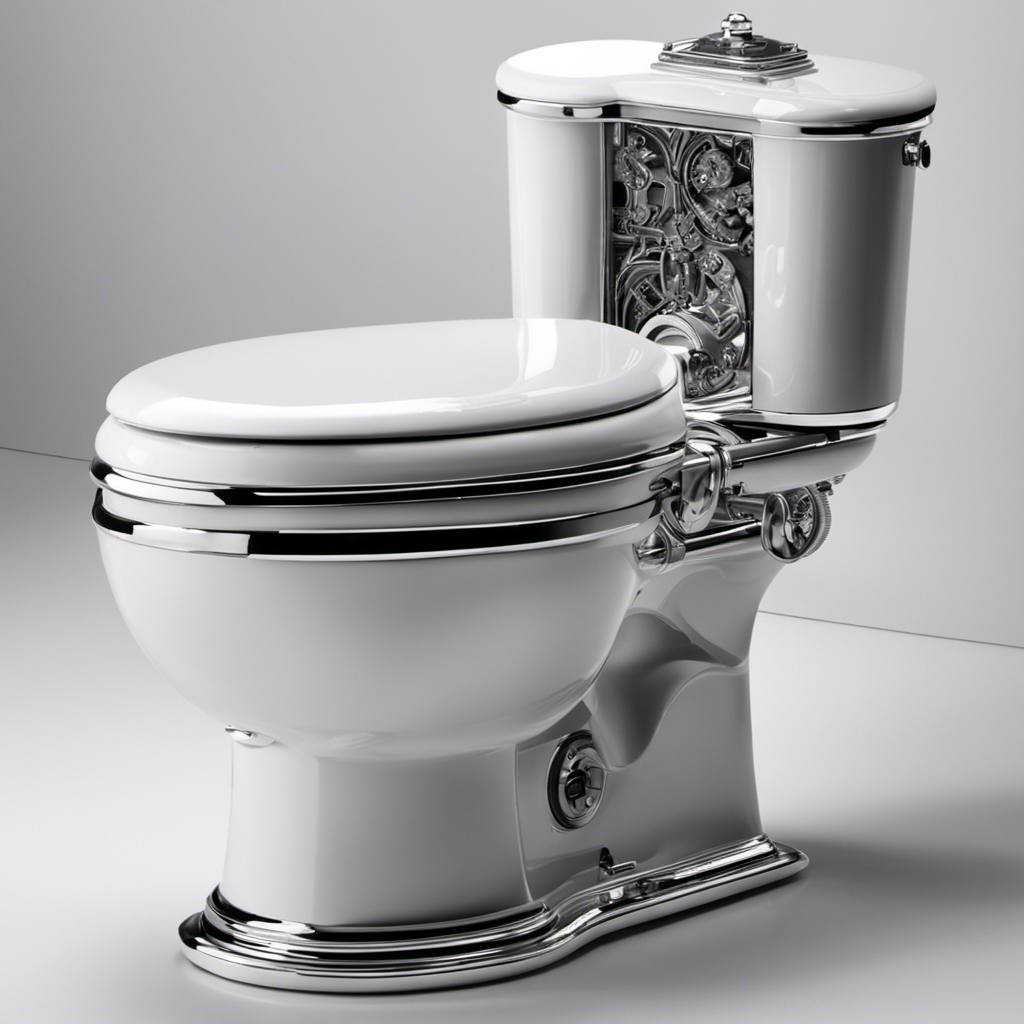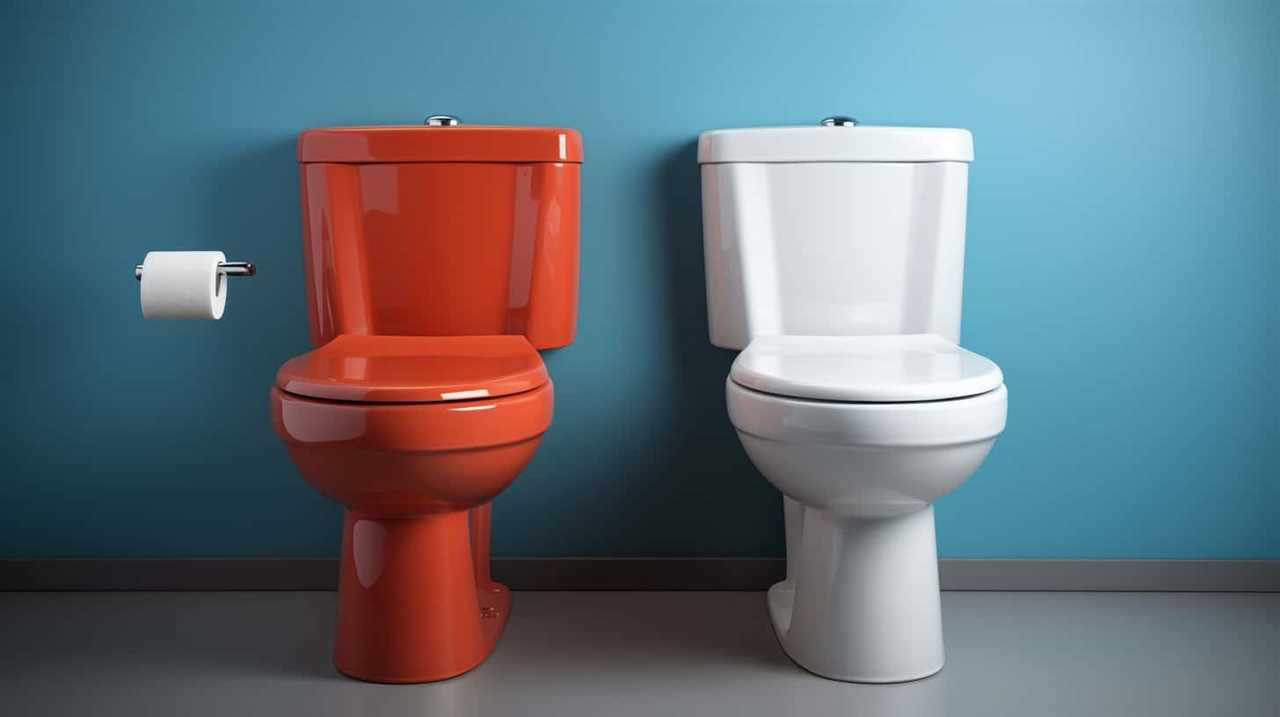Have you ever experienced the frustration of a wobbly toilet seat? Fear not, for I am here to guide you through the process of tightening it.
In this step-by-step article, I will show you how to assess the problem, gather the necessary tools, and securely fasten your toilet seat.
By following my detailed instructions, you’ll be able to achieve a stable and secure toilet seat that will bring you peace of mind during every use.
Let’s dive in and conquer this annoying issue together.
Key Takeaways
- Regular maintenance is essential to ensure a secure and stable toilet seat.
- Use the appropriate tools (screwdriver, wrench, pliers) to tighten screws, bolts, or hinges.
- Clean the area where the seat attaches to prevent dirt or bacteria buildup.
- Test the seat for stability by sitting on it and gently shaking it after tightening.
Assess the Loose Toilet Seat
First, you’ll want to check if the toilet seat is loose by giving it a gentle wiggle. Common causes of a loose toilet seat include worn-out screws, loose hinges, or a damaged mounting bracket.
To prevent this issue, it is crucial to avoid excessive force when opening or closing the seat. Additionally, regular maintenance is essential to ensure the seat remains secure.
To tighten a loose toilet seat, start by locating the mounting screws underneath the seat. Use a screwdriver to tighten these screws, but be careful not to overtighten as it may cause damage. If the seat still wiggles after tightening, consider replacing the screws or hinges.
Gather the Necessary Tools
Next, gather all the tools you’ll need for the task. Here’s a list of essential tools for tightening a loose toilet seat:
-
Screwdriver: You’ll need a flathead or Phillips screwdriver, depending on the type of screws used to secure the seat.
-
Adjustable Wrench: This tool will come in handy if the seat is attached with nuts or bolts.
-
Pliers: Pliers can be useful for gripping and tightening any loose components.
Toilet seat maintenance is crucial to ensure a secure and stable seat. Common causes of a loose toilet seat include worn-out screws, loose nuts or bolts, and damaged hinges.
Having these tools ready will make the tightening process easier and more efficient. Remember to turn off the water supply and clean the area before starting the maintenance.
Remove the Toilet Seat
To remove the toilet seat, you’ll need to locate the screws or bolts that are securing it in place. These screws or bolts are usually found at the back of the seat, near the hinges. Using a screwdriver, loosen the screws or bolts by turning them counterclockwise.
Once they are loose enough, you can lift the seat and lid assembly off the toilet bowl. Be careful not to drop it or damage any surrounding fixtures.
After removing the seat, take this opportunity to clean the area where the seat was attached. Use a mild cleaner and a soft cloth to wipe down the toilet bowl and the underside of the seat. This will help prevent any buildup of dirt or bacteria before you replace the toilet seat.
Tighten the Hinges or Bolts
You can use a screwdriver to ensure the hinges or bolts are secure. Here’s a step-by-step guide on how to tighten the hinges or bolts of your toilet seat:
-
Identify the type of fasteners used: Check if your toilet seat has hinges with screws or bolts. This will determine the tools you’ll need.
-
Adjust the tension: If your toilet seat has hinges with screws, locate the screws on the underside of the seat. Use a screwdriver to tighten them by turning clockwise. If your seat has bolts, you may need to use a wrench to tighten them.
-
Test the seat: Once you’ve tightened the hinges or bolts, check if the seat is secure. Sit on the seat and wiggle it to ensure it doesn’t move or feel loose.
Reinstall the Toilet Seat
Now that the hinges or bolts are secure, it’s time to reinstall your toilet seat.
To begin, make sure the toilet bowl is clean and dry. Then, position the seat over the bowl, aligning the holes in the seat with the holes in the bowl.
Once aligned, insert the bolts or screws through the holes and tighten them using a screwdriver or wrench. Ensure that the seat is level and centered before fully tightening the bolts.
For extra stability, you can also consider using adhesive. Apply a small amount of adhesive to the bottom of the seat where it meets the bowl. This will help prevent any movement or wobbling of the seat.
Allow the adhesive to dry completely before using the toilet.
Test and Ensure Stability
Once the bolts or screws are securely fastened, give the toilet seat a gentle shake to test its stability. Ensuring the stability of your toilet seat is crucial for a comfortable and safe bathroom experience. Here are some tips to prevent toilet seat wobbling and loosening over time:
-
Regular maintenance: It is important to regularly inspect and tighten the bolts or screws that hold the toilet seat in place. Over time, these can loosen due to frequent usage.
-
Use proper tools: When tightening the bolts or screws, always use the appropriate tools, such as a screwdriver or wrench, to ensure a secure fit. This will help prevent any future wobbling or loosening.
-
Avoid excessive force: While it is necessary to tighten the bolts or screws, avoid applying excessive force as it may damage the toilet seat or the fixture itself.
Frequently Asked Questions
How Do I Know if My Toilet Seat Is Loose?
If my toilet seat feels wobbly or moves when I sit on it, those are signs of a loose toilet seat. It’s important to address this issue promptly to avoid further damage and ensure proper toilet seat maintenance.
Can I Use Regular Tools to Tighten My Toilet Seat?
Yes, you can use regular tools to tighten your toilet seat. All you need is a screwdriver or wrench. If you don’t have these tools, there are alternative methods that can be used as well.
What Should I Do if the Bolts on My Toilet Seat Are Stripped?
If the bolts on my toilet seat are stripped, there are repair options available. I can try using a rubber washer or adhesive to secure the seat. If that fails, I may need to replace the bolts.
How Often Should I Check and Tighten My Toilet Seat?
Regular maintenance is crucial for ensuring the longevity of your toilet seat. By checking and tightening it periodically, you can prevent loosening and potential damage. Here are some tips to keep it secure.
Is It Necessary to Remove the Entire Toilet Seat in Order to Tighten It?
No, removing the entire toilet seat is not necessary to tighten it. There are alternative ways, such as using a wrench or screwdriver, to secure a loose toilet seat. Preventative tips include checking the seat regularly and tightening any loose bolts.
Conclusion
In conclusion, tightening a loose toilet seat is a simple task that can be done with just a few tools and a little bit of time. By assessing the looseness of the seat and gathering the necessary tools such as a wrench or screwdriver, you can easily remove the seat and tighten the hinges or bolts.
Reinstalling the seat and testing its stability ensures a secure and comfortable bathroom experience. Just like a well-oiled machine, a tightened toilet seat will stay in place like a rock, providing stability and peace of mind.
